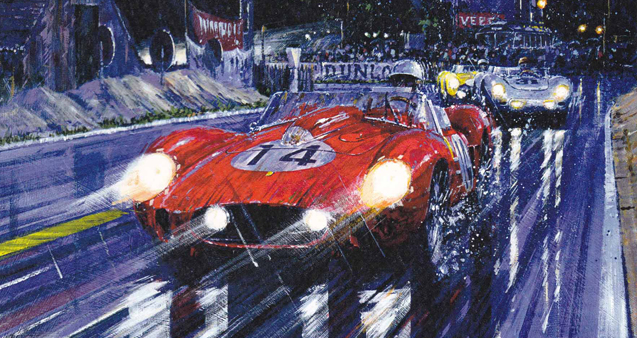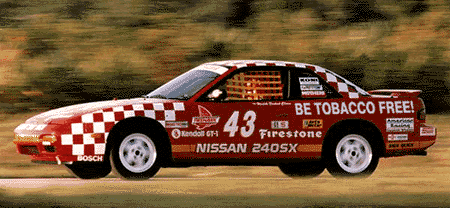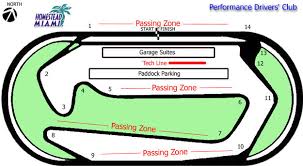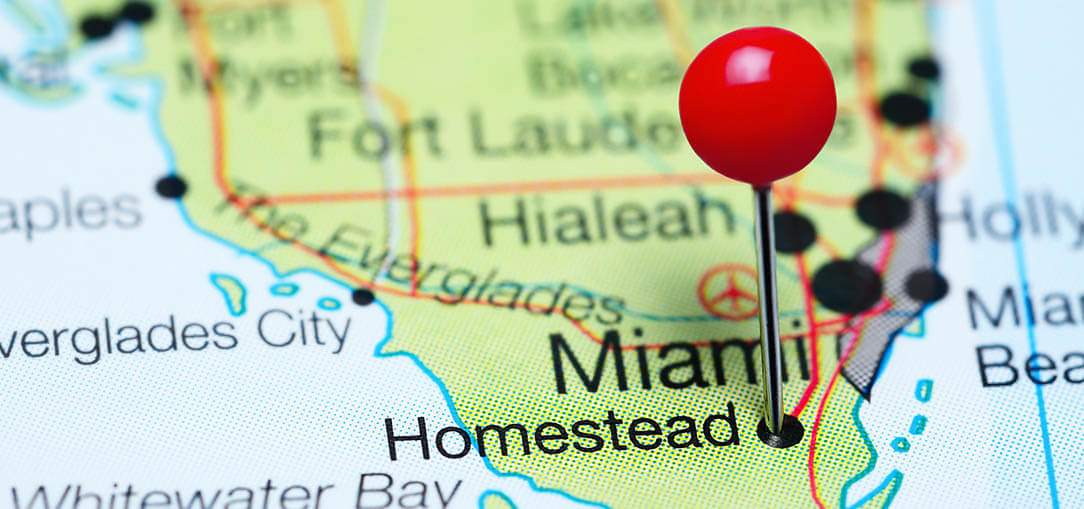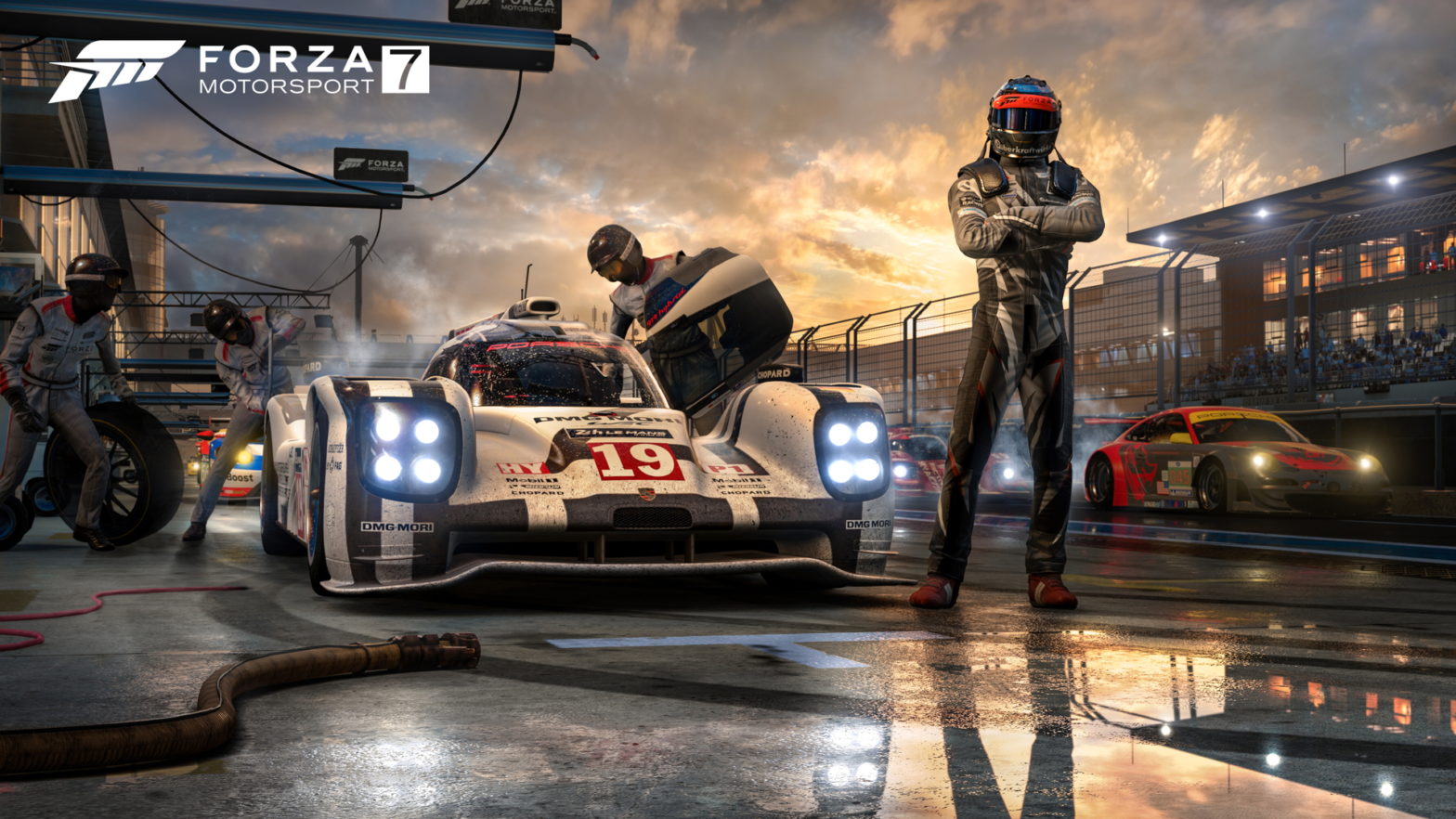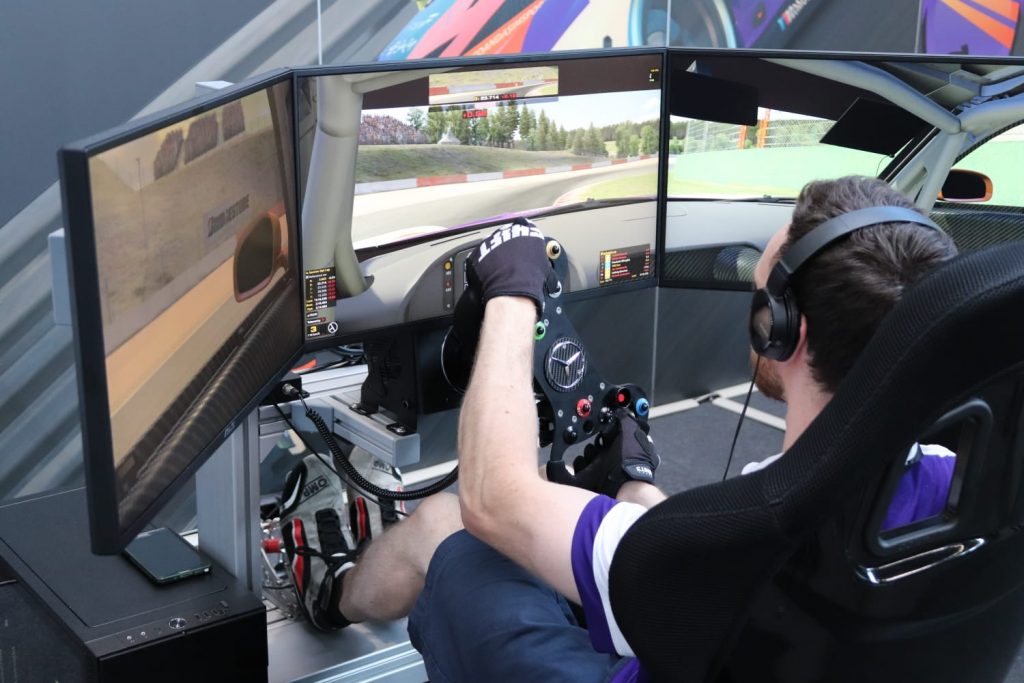When I was younger, I would have chosen a high-power muscle car to race. Something like a Mustang or Camaro. I liked the awesome power, the loud exhaust, and the sexy looks of the fastest, most powerful cars. But as I got older—and especially after I started racing—I began favoring the lower horsepower compact cars. To my mind, that seems backwards. It seems like I should have favored the big horsepower the older I got, but it didn’t work out that way.
When I started racing in real life, I raced a Dodge Shelby Charger. Carroll Shelby is normally associated with Ford, especially with the Mustang. But for a time in the 80’s, Shelby worked with Lee Iacocca at Chrysler. He tuned the Charger—which I raced—but was probably better known for his work with the Chrysler Omni GLH (which stood for “Goes Like Hell”).
There were a couple interesting things about my first race car. It started life as a factory Dodge race car in the Firestone Firehawk series. It was driven primarily by Terry Earwood, but Dorsey Schroeder also drove it on at least one occasion.
I bought the car from Sylvain Tremblay, who went on to found SpeedSource, which ran primarily Mazdas, including the early Mazda Daytona Prototypes in IMSA. Earlier in his life, Syl was quite a good driver himself, competing in SCCA and IMSA events. When I went to see the car for the first time, Syl treated me to an unforgettable drive from his shop to his house, through the Fort Lauderdale area, including hitting triple digits on the speedometer on I-95. I was lucky to make it out alive.
In my first year with the Charger, I won the Showroom Stock A class in the South Atlantic Road Racing Championship (SARRC). Don’t tell anyone, but there weren’t many competitors in the class. Hey, a championship is a championship.
The next year, I finished third in the SARRC Improved Touring B class in a Volkswagen Golf. That may have been the start of my love affair with VWs. The Golf started off life as a race car in the 1985 Golf Cup. It was driven and owned by Randy Pobst, and later Larry Brown. I became friends with Randy after he served as my first SCCA driving school instructor, he introduced me to Larry, who sold me the car.
After the Golf, I rented rides for a short time, first in an SSB Nissan 240 SX owned by Mike Guido, and then in a Camaro IROC Z28 owned by Randy. Financially, renting a ride is the way to go, especially if you lack mechanical skills like me. Unfortunately, I liked owning the car, so I ended up buying a former Firehawk (or Motorola Cup) 1993 Honda Prelude.
I loved the Prelude. When I bought it, I cleaned it up and repainted it. It looked sharp. That didn’t last long. Mike Guido and I raced it in the Endurance Championship Racing (ECR) series run by the Southeast Division of the SCCA. By the end of our first season, the Prelude needed to be repaired and repainted again. It was expensive, but I spent the money to have it done. In the first corner of the first race of the next season, another car hit me from behind, pushing me off track and into another car. My new paint job lasted about 150 yards.
Oddly, I have no memory of what I did with the Prelude. My guess is that I sold it, but I don’t remember to who or for how much. I have this recurring dream that it has been sitting in a storage unit since 1998 accruing charges.
After the Prelude, Mike and I raced his Nissan 240sx. This was a different car from the one I rented previously. The 240sx, which began life in the short-lived International Sedan Series, was a blast to drive. Unlike most of the other cars I raced, the 240 was rear-wheel drive. And it drove like a dream. The hot cars in the ITS class at the time were second-gen RX7s and BMW 325s. But we gave them a run for their money. Out of more that a hundred cars that competed in the ECR series, we finished the season 11th in points.
I took a break from racing for several years while raising a family and starting a business. At one point I flirted with short oval track racing, buying a race truck built to compete in the Midwest Truck Series. But my flirtation with short track racing never took off. I tested the truck a couple of times, and then sold it.
My re-introduction to racing was in the ChampCar Endurance Series (nee: ChumpCar) at Nashville International Speedway in a Porsche 944 owned by Donnie Weymer. We had a good day going, but the racing was interrupted by a downpour of Biblical proportions. Nashville had horrible flooding from the storm. In fact, it was so bad on I-24 that people drowned in their cars on the highway. The race was called and rescheduled for later that year. Donnie couldn’t make it back for the race, so I raced with a team out of Birmingham, AL in an Acura Integra. The Integra wasn’t very fast, but it was fun to drive.
Over the next year I drove a Nissan 300zx at Sebring, a Chevy Camaro at Charlotte, and a Toyota Celica at Eagle Canyon Raceway in Texas. Those experiences convinced me to buy another race car. This time, I bought a Geo Storm built to ITB specs. It wasn’t a very good car, but the price was right. My friend, Bill Boye, helped prepare the car, and we took it to a race at Road Atlanta. The car lasted two laps, expiring when the harmonic balancer flew off the car coming through Road Atlanta’s final corner. That was the end of that car. I sold it, and it had a short, violent life with the new owner before it was sent to the crusher.
“Lou has one of the worst cases of race car ADHD I’ve ever seen.”
–Mike Chisek, President, ChampCar Endurance Series
It might have been at this point that Randy and I bought a first gen RX7. We never could get it to run correctly. We had constant fuel starvation issues with the car. We sold it to a young guy just starting out in racing. It took him some time, but he finally figured out the problem.
My next car was a second gen RX7, followed by an Acura Integra GSR, then a BMW M3. There’s a story behind each car, but I’ll save them for another time. My point is, I’ve really come to appreciate lower horsepower cars. They’re a blast to drive, and they’re a lot more fun in the corners than most high horsepower cars. Which brings me back to the question I posed in the title of this post: What car should I drive as I get ready to begin my sim racing journey?
I’m going to start with low horsepower cars. I’ve always said, the best way to learn to race is to learn to go fast in a slow car. At some point I’ll shift over to higher powered car, but I’ll start with the pee shooters.
